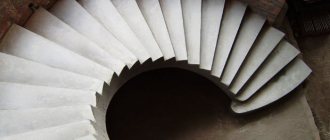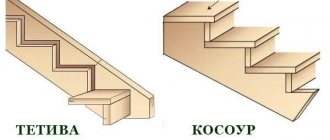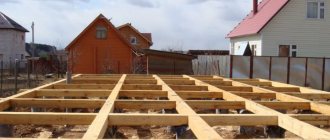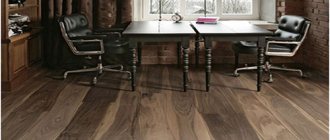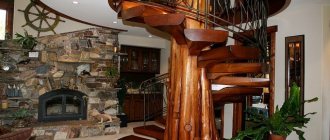What is a porch, why does it exist and what functions does it perform?
The porch is an extension to the house, which, through steps, makes it easier to enter/exit the doors. Since the porch usually has a canopy, this provides additional protection for the doorway from the sun, rain and snow.
In addition, the porch acts as a decorative element that makes the exterior of the house complete and makes its operation convenient.
As a rule, the parameters of the porch are thought out at the stage of building a house, cottage or cottage. But often a porch is attached to an existing structure.
Traditionally, to build a porch in front of a house, the same material from which it is built is used (for example, a wooden or brick house). The porch can be made of wood, concrete, metal, brick. It is important that the selected material (for steps, cladding, porch finishing) is in harmony with the overall design of the house.
Due to the fact that wood is the most popular, as well as accessible and inexpensive material, porches are most often built from wood. Therefore, we will consider in detail (step by step) how to organize the construction of a wooden porch. Another argument in favor of lumber is the ease of working with wood, which makes it possible to make a wooden porch with your own hands.
Wooden porch for a private house - project
Construction begins with the development of a project that takes into account:
Types of porch
- Regular (simple porch), consisting of several steps, with open or closed risers, with or without railings. A simple wooden porch is low and lacks a wide deck.
Neat little porch
Wooden porch with railings
Wooden porch without railings
Wooden porch of classic shape
- Porch-patio, i.e. a porch with a platform intended for installing pots of flowers or arranging a resting place.
Wooden porch-patio
Porch-patio with wooden platform
Porch-patio with fenced area
Porch-patio with massive steps
- Porch-terrace or veranda. In this case, the porch is combined with the open space of the house.
Wooden porch-terrace
Wooden porch-veranda
Porch design
- built-in porch - built together with the house, has a common foundation with it;
- attached (attached porch) - completed during the operation of the house.
Material for porches in a private house
- tree;
- concrete;
- metal (forging, steel, iron);
- brick (stone).
Methods for constructing a wooden porch
Possible implementation in two versions:
- On a site with straight and beveled frames
Straight porch frame - diagram
Straight porch frame - drawing
Sloped porch frame - diagram
Sloped porch frame - drawing
This method is simpler and consists in installing a wooden box (or a porch frame made of a metal profile) on the prepared site, on which steps are installed.
This option is also more budget-friendly; it can be implemented at any stage of construction or operation of the house. A closed wooden porch makes it possible to hide all the flaws that arise during the construction stage;
- On a reinforced stringer or bowstring
Porch frame on reinforced stringer - diagram
Porch frame on reinforced stringer - drawing
The peculiarity of this method is that the base frame is prepared only for the lower part of the stringer/string, and the upper one rests on beams or a floor slab. This method of building a porch provides more opportunities for implementing original solutions.
Classic porch with entrance platform
The entrance to the house and the wooden porch itself are much more convenient to use if there is a small area or even a tiny terrace in front of the entrance. Making the most popular wooden porch project among the people is not much more difficult than in the previous version. Moreover, the design of the staircase remains the same, but with a small addition. To build a platform, you will need to drive several additional supports into the ground, on which, in fact, the wooden platform rests. Wooden supports must be covered with a sand-crushed stone mixture and concreted.
The frame and supporting surface of the platform can be made from pine log boards, which are assembled into one box. It will be more convenient if the upper supports of the stair stringers are made lower and rested on the second load-bearing joist of the box. The top of the box can be made in the form of a lattice; this solution is popular for rural areas and dachas, where dust and dirt from the soles of shoes have to be removed before entering the house more often than anywhere else. In the standard version, the surface of the site is sewn into a tenon with a floorboard and treated with protective mastic.
Depending on the design of the porch, the fencing of the platform can be made of metal, for example, from a profile, or forged metal posts can be used. A simpler option would be a wooden structure. In this case, the supports can simultaneously be made into fence posts. Along the perimeter of the handrails, the internal space is filled with wooden balusters, which can be turned or carved, as in the photo.
Advice! The places where the stringer is attached to a joist or external beam made of wood can be made more durable if you do not cut grooves in the joist, but use No. 75 steel angles and bolted fastening as a connection point.
If the width of the canopy area is from one to two meters, to increase the rigidity of the porch it will be necessary to make an additional row of supports. A further increase in size will require additional rows of support posts for every additional 70-80 cm of the platform.
How to make a wooden porch with your own hands without mistakes
Before we tell you how to build a wooden porch, we will describe the main mistakes that novice craftsmen may encounter.
- stylistic errors. The dimensions, appearance, and material of the porch must be in harmony with the general appearance of the building (house design);
- errors in the dimensions of the porch. The porch should be proportional to the main building;
- errors in measurements.
Each parameter is measured several times and plotted on the diagram;> Note. Professionals advise putting on the diagram not only the dimensions of the porch and wooden frame, but also other parameters: the size of the doorway, the distance from the porch to the plants or protruding decorative elements. This information will be useful if necessary to correct the porch drawing. - excess material consumption. Eliminated through careful planning.
- ignoring the requirements for structural strength. The porch is the most used part of the building. In addition, it is exposed to external factors, which means the material must be selected with a margin of safety and taking into account the dimensions of the porch;
- provide additional protection to a wooden porch.
Untreated wood gradually loses its properties, so it needs protection and constant care; Note. Both open parts of the structure and load-bearing parts need protection, i.e. those that are placed in the ground or rest on a foundation.
- separation of the foundations of the house and the porch (on different (separate) foundations) will lead to uneven shrinkage of the porch and the appearance of a crack between the elements. This can be avoided by a threshold installed at the junction of the porch and the house. Or installing a threshold without a march, with the first step 150-170 mm below the threshold. But this is fraught with injury, since when leaving the door, the user is forced to go down;
- the absence of a foundation leads to the fact that the porch “floats” under the influence of soil displacement (shear);
- jamming of doors (blocking, jamming). Occurs due to geological changes (frozen soil can raise the porch a couple of centimeters).
How to properly build a porch for a house
Project selection
After looking at the options for porches in the photo, you can come up with your own project and create a sketch of it first. At the same time, you cannot deviate from the general style of the house.
The design of the porch should be carried out taking into account the following factors:
- Home style;
- Dimensions and proportions of the building;
- The design of the main dwelling and the materials used for construction;
- Building security;
- Correspondence of the technical parameters of the porch to the physical data of all household members.
Advice: Creating a porch is a fairly serious task, the solution of which should be treated with the same responsibility as building a house.
The project indicates the configuration of the porch, which can be:
- Square;
- Round;
- Rectangular;
- Trapezoidal.
After choosing the type of porch and its shape, the materials for manufacturing are determined, which are presented in the table:
| Type of material | Peculiarities |
| The price of such a porch is less than the cost of a structure made from other materials. In this case, during construction no special professional knowledge in the field of construction is required. This could be a do-it-yourself timber porch, for which you can use ready-made drawings. You can also develop them yourself, and build the structure too. |
| Making a porch from metal gives room for imagination. You can use it to create very beautiful balusters and wrought iron railings. But it must be borne in mind that before installation, all metal elements must be treated with anti-corrosion compounds. |
| This is the most common option and requires a solid foundation. Its differences: high strength and load-bearing capacity. The finishing coating and design of the porch can be very different, depending on the chosen material for cladding. |
| A brick porch, like a concrete one, requires a foundation. The cost of brick is higher than concrete, but its appearance is more aesthetic and does not require additional cladding. |
Material for making a porch
To make a beautiful wooden porch you will need building materials:
- For supports, a beam with a cross section of 100x200 mm is suitable. The size depends on the type of porch, the expected load, the number of supports, etc. When choosing wood for supports, it is better to give preference to larch or pine, due to the presence of resins, they can withstand all-season operating conditions well;
- for the entrance platform from the steps you can use a board 30-50 mm thick;
- ready-made balusters and railings. Or timber and lath for their manufacture. The dimensions of the lumber depend on the parameters of the future product.
- solutions, compositions and impregnations for wood protection;
- cement mortar (concrete);
Note. Using 50 mm boards for both supports and steps will allow you to avoid errors in calculations, reduce waste and, in general, use lumber more efficiently.
Procedure for installing steps
To assemble the stairs, you should prepare all the necessary parts, namely:
- rectangular blanks used for the manufacture of steps;
- pieces of bars for railings and balusters;
- ready-made stringers, cut according to plywood patterns.
Before starting work, all wooden blanks must be treated with wood protective compounds. Installation of the structure begins with fixing the stringers on the upper section of the entrance platform (more precisely, on a piece of timber reinforced with metal corners). One side of the timber blank will be adjacent to the surface of the porch, and the other - directly to the stringer.
To fix steps and risers, it is not allowed to use ordinary nails, which can lead to loosening of the stairs. For these purposes, it is advisable to use self-tapping screws, and it will be even more reliable to engage the elements according to the tongue-and-groove pattern.
For a simple wooden porch design, all the operations described above are quite sufficient to consider the main work completed. All that remains is to mount the canopy and railings. Let's add to this that to strengthen the entire structure, it is best to fix the support posts at the points where they adjoin the stringers.
Drawing of a wooden porch
Even a simple (standard) drawing, drawn independently, will help to avoid difficulties during its construction.
The porch drawing must contain the following information:
- appearance of the porch. Makes it possible to visualize the final appearance of the structure;
- width of the porch - should be one and a half times wider than the doorway (you can calculate how wide the porch should be this way: 1.5 times the width of the door, this will be the minimum allowable width). This width will allow you to open the door while on the porch area;
- The width of the stairs to the porch (flight of stairs) must be at least 700 mm. Otherwise, difficulties will arise when moving people and objects along the steps;
- location of the porch platform (flooring). The porch floor should be 30-50 mm below the threshold (doorway). A lowered porch platform will prevent the doors from blocking due to snow or lifting of the porch structure;
- porch angle;
Note. Professionals advise sloping the porch area and steps by 2-3° to avoid water accumulation. An alternative would be to install deck boards with a gap of 2-3 mm.
- foundation. Types, depth, characteristics of the soil underneath;
- number and size of porch steps. The standard recommends adhering to the following dimensions of steps: height – 170-180 mm, step depth (tread) – 300-350 mm. It is desirable that the number of steps be odd. These dimensions will make movement along the steps comfortable;
- presence and installation location of fencing (balusters and railings).
Note. In construction practice, there are no norms and rules regulating the parameters of the porch. The recommendations concern only the parameters of the steps.
Drawing of a wooden porch, as an illustrative example:
Drawing of a wooden porch with dimensions
Scheme of a wooden porch
It’s convenient when working when the diagram of a wooden porch is made on a large sheet of paper and is always in front of your eyes.
A good alternative would be a life-size cardboard template. A paper template is indispensable when making a flight of stairs on a bowstring.
Porch template
How to Avoid Design Mistakes
When determining the width and angle of inclination of the flight when designing a staircase, it is necessary to take into account what material will be used.
This is especially true for stairs on a metal frame, on which overhead stone steps are usually installed, concrete steps, lined with clinker tiles or other material.
Calculations that do not take into account its thickness and format lead to overexpenditure of the cladding and an increase in the cost of the structure.
The cladding has its own thickness, which must be taken into account in the overall size of the step
What is net size
The finishing of the porch is done after assembly, and if it is concrete, then after it has gained strength.
All that remains is to cover it, but if the thickness of the material is not taken into account, problems will arise.
The porch must have some headroom
The concrete base always has to be leveled. The thickness of the fill seems to be small, only 3-5 mm, but it changes the overall proportions of the porch.
Its height must be calculated so that after leveling or gluing the tiles, the level of the platform does not rise so much as to interfere with the door opening.
There should be a gap of at least 4 cm between the bottom edge and the finishing surface, which will prevent water from flowing in during rain or snow drift.
Nuances of calculating cladding
The street staircase has to withstand increased loads, and therefore high-quality material is used for cladding:
- solid clinker steps;
- porcelain tiles for steps and landings;
- hardwood.
Clinker steps are an expensive material.
You need to know in advance about the thickness and format parameters. The width of the march can be made a multiple of the side of the tile, which will allow it to be laid without trimming.
The thickness of the tile joints is important, each of which is 3 mm.
Calculation of the dimensions of a concrete march, taking into account the thickness of the mortar and cladding
If the tile is not square, but rectangular (say, 30*60 cm), it is laid with the smaller side along the width of the step, and the larger side along the length.
Tread depth 300 mm. Small-format tiles, for example, 25*33 cm, can be laid on either side, it all depends on the width of the step - 25 cm, or 33.
Many manufacturers, especially porcelain stoneware, make tiles with large and small formats in one series. Sometimes the best option is obtained by combining, only one of the sides should have the same size.
There are narrow inserts between the wide tiles
Standard selection of cladding elements for stairs
Same thing with risers. Rectangular tiles are also made for cladding. The dimensions of the sides correspond to the standard riser height.
Each manufacturer has its own formats; if a Russian-made tile has a side of 300*300 mm, an imported one may be at least close, but not exactly the same. In the example above, the format is 294*294 mm. There are no standards here.
If you take everything into account in advance and calculate the width of the flight, you can save a lot of money on waste-free cladding, in which trimming occurs only at the outer corners (if there are any).
If calculated correctly, tiles will be trimmed only at the corners
Foundation for the porch of a house
Wooden staircase to the porch A correctly selected and poured foundation for a wooden porch is the key to its strength and durability.
A wooden staircase to the porch can be installed without a foundation. But filling it will prevent the porch from moving due to seasonal soil movement.
When building a porch, you can choose one of the following types of foundation:
Columnar foundation for the porch Columnar. Well suited for lightweight construction. The number of support pillars depends on the size of the porch.
Slab foundation for the porchSlab. Structurally, it is a monolithic concrete slab. Designed for heavy (massive) structures. In most cases, a slab foundation does not need to be tied to the foundation of the main structure (house).
Strip foundation for the porch. Strip foundation. It has a significant margin of safety, while requiring less material costs. Connection to the foundation of the house is required.
Material prepared for the website www.moydomik.net
What kind of foundation is best to pour under the porch?
Some users recommend installing a strip foundation for the porch. In this case, the likelihood of a discrepancy between the porch and the house, as when using a columnar one, is eliminated. It also reduces material consumption compared to slab. The difficulty in arranging this type of foundation is that it needs to be tied to the house.
How to tie (connect) the foundation of the porch and the house?
First of all, adjacent foundations of the porch and house must have the same depth.
It is better not to immediately fill the place where the foundations are attached (fastened, connected), but leave a technical gap (a gap of 20-30 cm), in which there will be connecting elements (studs, reinforcement).
In the old foundation of the house, holes are drilled at a distance of 50-60 mm and studs with expansion anchors are driven in. From the new porch foundation, make a rebar outlet to these studs. Simply fitted (do not twist or weld).
After the new foundation has “settled” (stands) for a year (or at least a winter), preferably under load, the reinforcement can be connected (tied, twisted, welded). Fill the bond with concrete mortar.
The diagram below shows how to make a porch out of wood with the foundation tied to the house.
Linking the foundation of the porch and the house - diagram
Connection of the foundation of the porch and the house - diagram
What is the depth of the foundation for the porch
The depth of the foundation for the porch should correspond to the depth of the foundation of the house and be below the freezing level of the soil.
A strip foundation is certainly an excellent solution for building a porch. However, not everyone needs a massive structure. After all, most porch staircases are built using stringers or bowstrings. In this case, it is not necessary to pour a strip foundation, but give preference to a pile or columnar foundation. When laying out such a foundation, you need to make concrete “pillows” for the supports and the base of the stringer/string.
The method for constructing a concrete pad is shown in the diagram.
Scheme of a porch on a concrete pad
Selecting the size of steps (preliminary calculation)
Such a characteristic size as the depth of the steps is chosen so that the foot is placed on them at its full size (that is, does not hang over the edge). In accordance with current standards, the most suitable depth for wooden porches is considered to be at least 300 mm and a height of about 160–180 mm.
The general algorithm for calculating the size of steps is based on the previously discussed design parameters (flight length, slope and height). So, with an approximate porch height of half a meter, to obtain an acceptable slope, the length of the march should be at least 1 meter.
Note! With the ratio of the given span length to the height, the slope will be one to two or 45 degrees, which corresponds to the standards.
With the selected step depth of about 300 mm, it turns out that only three of them will fit in a one-meter long flight, which also fits into the current standards. Based on this, the height of the step is determined (half a meter divided by the number of steps). It turns out 50 / 3 = 16.5 cm.
The obtained and rechecked parameters are then transferred to the previously prepared staircase sketch.
How to build a wooden porch for a house
Let's consider the technology of constructing porches on pillars (piles, supports, beams) made of wood.
The construction of a porch on a foundation in the form of a support cushion for pillars (support pedestals) will be justified only if a number of rules are followed:
- the base of the stringer must rest against the waterproofing laid between the foundation and the wood of the stringer;
- for supports it is better to take coniferous wood, it is preferable in conditions of high humidity;
Advice. When choosing lumber for a support, it is better to give preference not to a 100x100 mm beam, but to two 50x100 boards fastened together.
- the wood of the supports should be treated with an antiseptic;
Note. The support should be processed to a height of 150-200 mm from the soil level. In this case, it is undesirable to use roofing felt. It prevents the flow of air, and the process of wood rotting begins from the inside. It is better to use drying oil or used machine oil.
- installation depth of supports is at least 800 mm;
Advice. Professionals recommend burying racks to a depth equal to 1/3 of the length of the rack.
- the wider and more massive the structure, the more supports there should be;
- After the concrete used to fill the supports has dried, you need to check their height. Adjust the height difference;
- laying the logs on the supports is mandatory. Ideally, the upper edge of the stringer should be secured to a railroad tie.
Laying porch joists on supports
- at the ends of the supports you need to select quarters. This will ensure more reliable fastening of the lags and stringers.
Washed down the stringer of a wooden porch
Note. When making a porch from wood, it is necessary to consider waterproofing and a drainage system. This will avoid distortion of the porch structure.
It is worth noting that there is no fundamental difference in how to build a porch for a wooden or brick house. It is important to make an informed choice of the type of foundation and, if necessary, correctly link it to the foundation of the house.
Flooring the porch landing and installing steps
Users' opinions differ on this issue. Some advise fitting the flooring boards as closely as possible to each other in order to prevent the appearance of cracks typical of dry wood, and also making a slope of 1.5-2° to allow water to flow smoothly from the flooring.
Others recommend leaving a gap of 2-3 mm so that water flows down unhindered. At the same time, they claim that these gaps do not entail the risk of injury when walking on the flooring (except for high-heeled shoes). Wooden steps for the porch - you can buy them ready-made or make them yourself. If the latter option is selected, a detailed description is provided below.
How to make steps for a porch out of wood
Methods for attaching steps to a string. Steps are installed starting from the lower edge of the stringer/string. Fastening is carried out using self-tapping screws, which must be sunk into the wood to avoid injury.
First, the riser is installed, then the step. This is due to the fact that it is easier to maintain the dimensions.
When constructing a staircase on a stringer, the steps are attached to it. Options for attaching the steps to the string are shown in the diagram.
Wooden porch fencing
It is important to note that if a flight of stairs has more than 3 steps, it is advisable to equip it with a fence. The fence for the porch can be metal (forged, stainless steel), wood, brick, stone (or concrete). Wooden railings for the porch can become not only a guarantee of safety of movement, but also an additional decoration.
Decorative wooden porch fencing
Stylized wooden porch fencing
Recommendation. Provide safety elements - anti-slip coating on the porch steps (non-slip, anti-slip, rubber, rubber coating, tiles, mat). After all, frozen moisture (icing) makes movement on them dangerous.
Anti-slip coating on porch steps
We have sorted out the question of how to make a wooden porch; now it is important to study how to extend its service life.
Shape of steps and types of stairs
The shape of the steps depends on the type of staircase chosen for construction. There are rectangular shapes, wedge-shaped or “wedge-shaped”, trapezoidal shapes (extraneous steps).
Therefore, before choosing the shape of the steps, it is necessary to determine the staircase option, namely:
The staircase is a flight of stairs; Spiral staircase; Hospital staircase (from the German word "Schraube", which means the way the steps are attached and the absence of a supporting structure among them).
If the staircase is a flight of stairs, then the steps form a simple rectangle of varying sizes. The same steps are used for stairs in hospitals.
Recommendation! In a hospital staircase, the staircase is only attached to the wall, and the weight goes into the middle of the staircase, so that the staircase can be reinforced in the middle with an additional metal pipe. In a house where disabled or elderly people live, there is no need to use screw structures: The elevator on this staircase is too steep.
If the staircase is spiral, then the shape of the staircase is wedge-shaped, and the smaller the opening, the steeper the staircase.
In the case of revolving stairs, the stairs are usually made up of extraneous steps and save a lot of space since they are installed instead of interstates.
How to protect a wooden porch - care
A canopy over the porch will protect the wooden steps and the structure as a whole from external factors (sun, snow and rain). A wooden canopy over the porch of a wooden house will look especially good. For buildings made of other materials (for example, for a stone house), polycarbonate, corrugated sheets, tiles or other roofing materials are suitable. The visor can be made with or without stands. The main thing is that the visor supports do not interfere with movement.
Recommendation. It is important to periodically process wood. This is a guarantee that the structure being constructed will not require major repairs for a long time.
Wood processing is divided into pre-operational and operational. The first involves applying special compounds before the construction of the porch begins. The composition of the solutions will reduce the tendency of wood to rot, deform, dry out, etc. And the second will make it possible to preserve the original appearance of the structure. Such processing may include painting, waxing or varnishing.
Advantages and disadvantages of a metal porch
The advantages of such a structure are obvious:
- Profile pipes are very durable and can withstand large maximum loads as load-bearing foundations.
- Supports made of profile metal are not inferior in strength to concrete pillars, but take up much less space.
- Great design possibilities in decorative design, openwork railings and inserts under a metal canopy give a sophisticated look to the entrance area.
- The cost of manufacturing a metal porch is much cheaper than a concrete or brick structure.
The iron porch also has a lot of disadvantages:
- Rusting over time, which is why it requires regular maintenance and renewal of the protective coating against corrosion.
- Slippery steps, they become especially dangerous in winter.
- Creating an original and beautiful entrance group will not be cheap and will require the involvement of specialists.
Painting a wooden porch
- pine wood needs to be exposed (coated) with paint in several layers and the layer periodically renewed;
- Before applying paint, you need to open (treat, impregnate) the wood with a primer;
Advice. The primer will preserve the properties of wood, but the surface will need to be painted every 3-6 years. Without impregnation, the paint will last up to 10 years, but the properties of the wood will deteriorate significantly.
- It is not recommended to coat pine with transparent compounds. Sand and dirt are pressed into the soft rock;
- larch or deciduous wood can be opened with transparent compounds. Vermeister Deck.Oil impregnation oil has proven itself to be excellent;
- When choosing what to paint a wooden porch on the street, you need to know that the compositions for coating the wood outside and inside the house may differ. To paint a wooden porch from the street (outside), use the following paints and enamels:
- oil-based (due to their pungent odor they are gradually losing popularity);
- water-based (need constant updating);
- alkyd (resistant to moisture and mechanical abrasion);
- polyurethane (used mainly in industrial environments);
- reactive (consist of two components; their distribution is limited by high cost and short time for application after mixing the components).
- Each renewal of the coating on wood is carried out only after stripping the surface of the previous layer of old paint.


